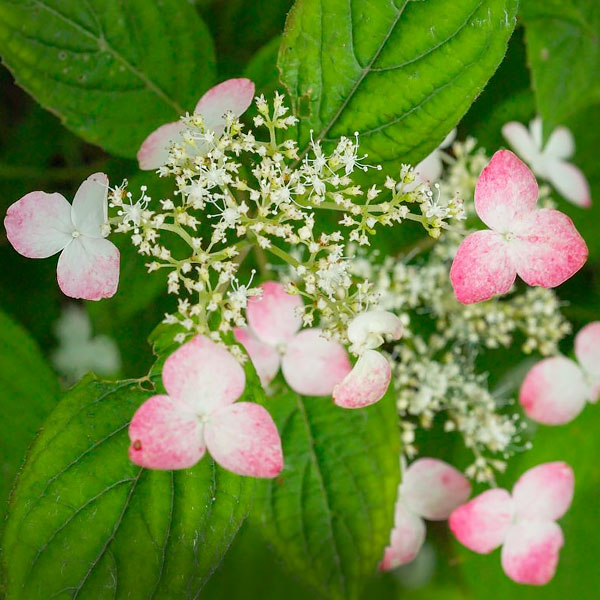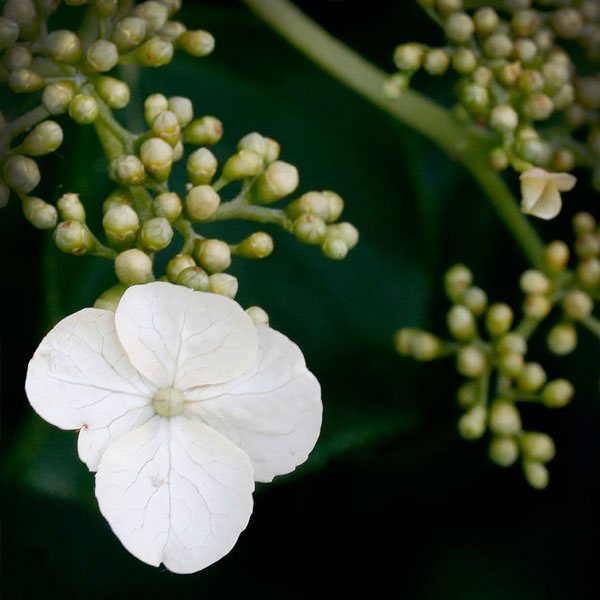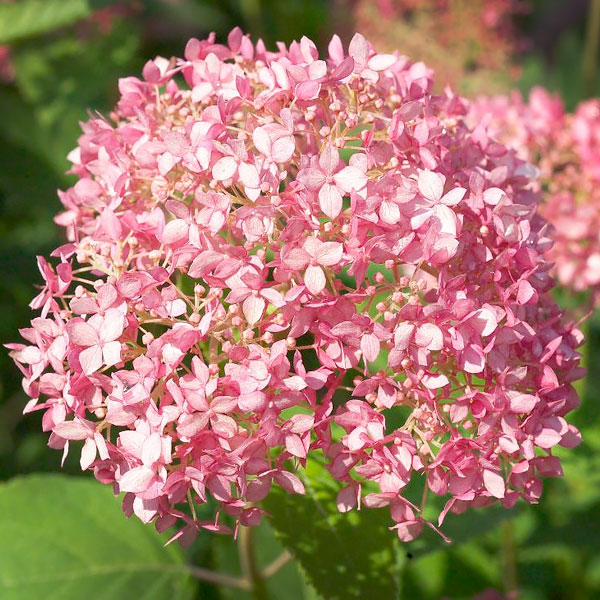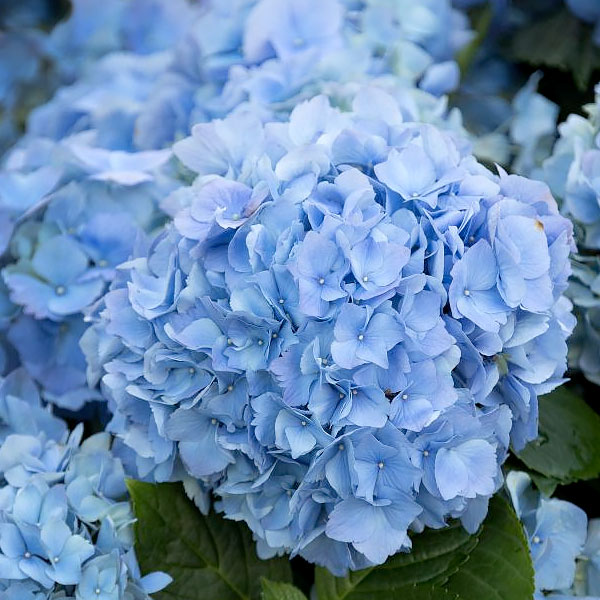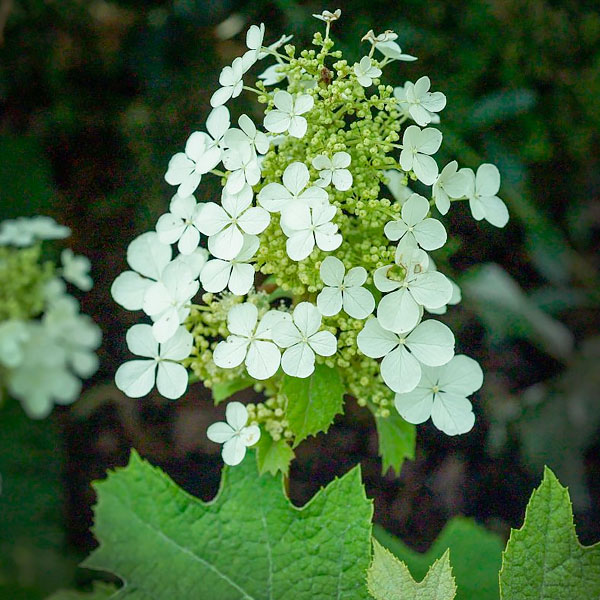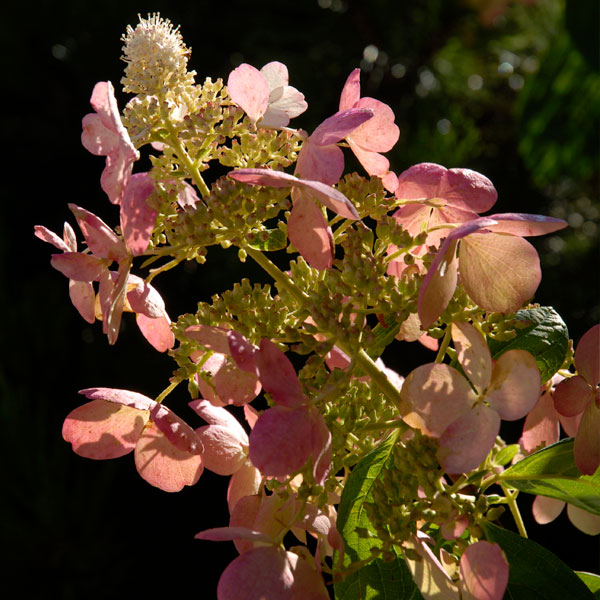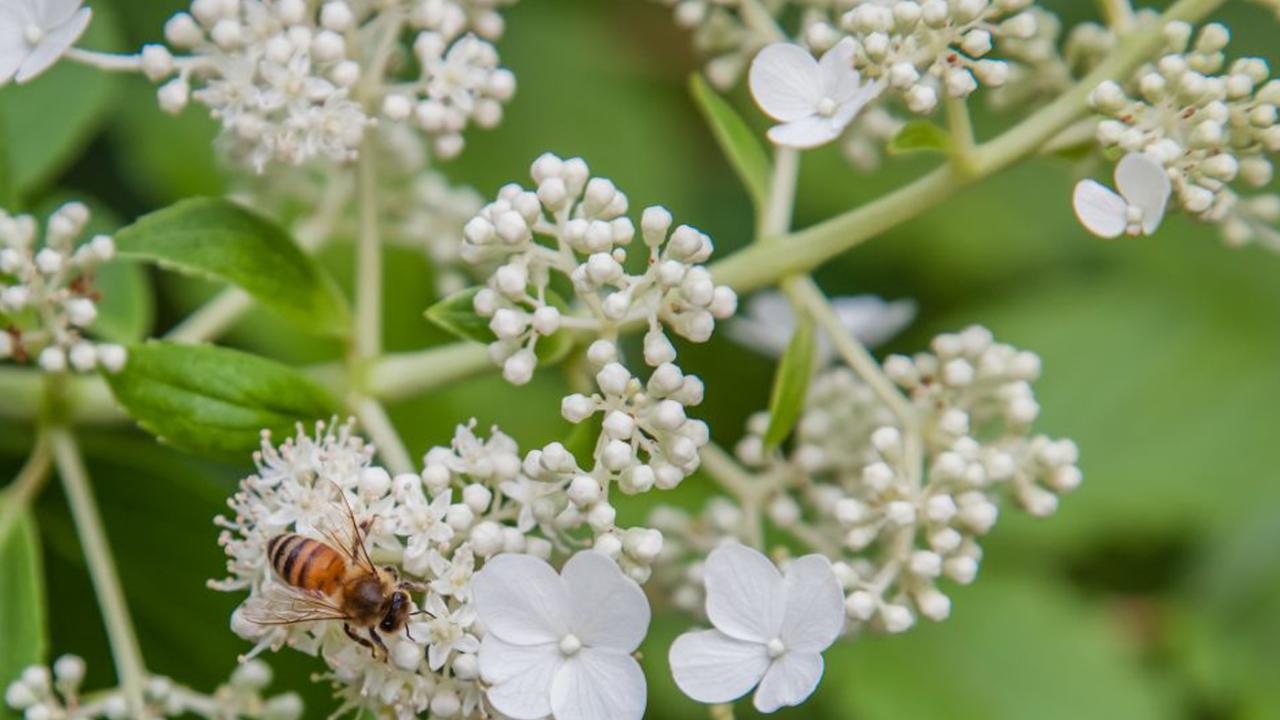

Hydrangeas
Hydrangea spp.
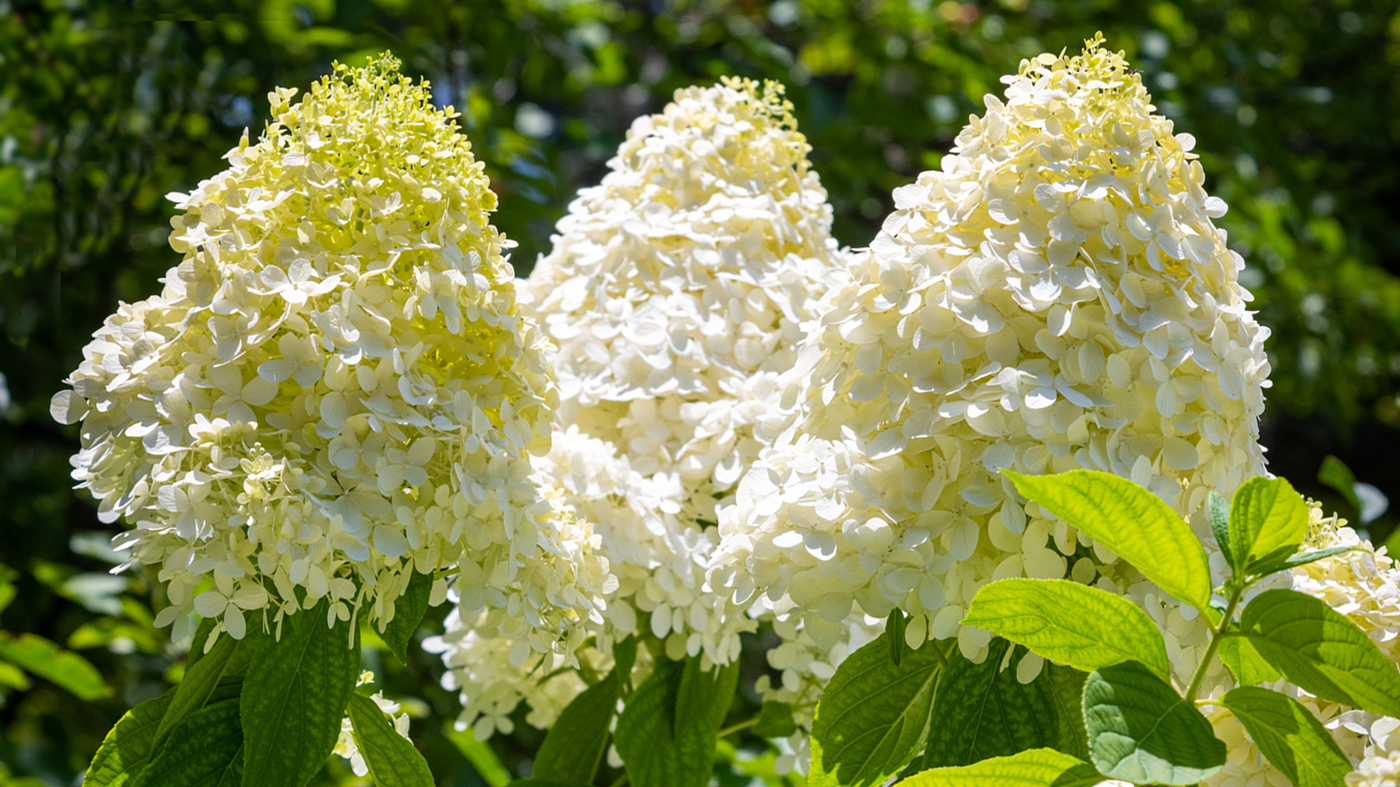
The hydrangea has come a long way from being just a popular Victorian shrub. Hybridization of certain species of hydrangea has shifted them from their exclusive provenance in New England, the Pacific Northwest, and the more temperate areas of the South, to the flat gardens of the Midwest, where they are flourishing as both suburban and urban flowering shrubs. Along the way, new cultivars acquired a greater cold hardiness, a tolerance to alkaline soils, and a preference for sunny conditions—ta-daaa, a perfect summer-blooming shrub for Chicago gardens.
Today’s gardeners are finding that the new varieties satisfy a number of landscaping needs, including shade tolerance, extended bloom time, and winter interest. And for the adventurous gardener, willing to push the horticultural envelope, there are some exciting hydrangeas for selected and protected sites.
Beautiful Blooms
The flowers are the plant’s most ornamental feature (although the oakleaf’s fall foliage also ranks high), often passing through several color stages before drying to an attractive pink beige. They persist into winter and can be left on the plant, unless the hydrangea requires pruning and they must come off. Depending on the variety, flowers may appear as early as June or as late as September.
Chicago Hardy Winter Varieties
Mountain Hydrangeas
A bit more tender for our area, H. serrata are the lovely and delicate lacecap hydrangeas. They are smaller in leaf and flower size which makes them perfect for shady garden beds and borders. Growers, anxious to supply hardy lacecap hydrangeas, have turned to cultivars of the mountain hydrangea (H. serrata) as possibilities.
Climbing Hydrangeas
If you want a woody vine with the flat hydrangea flowers, consider H. anomala ssp. petiolaris. This is a vigorous perennial vine that clings and climbs to almost any surface. It requires a sturdy structure and will cover trees, walls, rocks, and pergolas, and can reach 30 to 40 feet tall. The subspecies name petiolaris refers to the long petioles of this plant.
Smooth Hydrangeas
These well known shrubs can be found in every neighborhood—even decades after they first became popular. Andrew Bunting, director of plant collections, says, "'Annabelle' (H. arborescens) has been planted—maybe even overplanted—with good reason. It’s winter hardy to USDA Zone 3, it's good for cut flowers, it's relatively cheap, and every nursery carries it. To top it off, it's a native cultivar—or 'nativar'—from Illinois." Incrediball® and Invincibelle® Spirit are close cousins of 'Annabelle' that were bred to incorporate stronger stems and different color variations.
Bigleaf Hydrangeas
The very showy hybrids of the bigleaf hydrangea (H. macrophylla) with their intricate blue, pink, or mauve lacecap or mophead flower heads were quite popular during the 1930s and 1940s, and have had a resurgence in their popularity over the last decade. The subtle variations in color, even within the same flower, create fascinating effects. Newer models can be persuaded to grow happily in the Midwest, but some may suffer from considerable branch dieback during Chicago's cold months. Success is possible with winter protection, and regular applications of compost.
Oakleaf Hydrangeas
Native to the southeast United States, H. quercifolia is a shrub with four seasons of interest, unique leaves, interesting flowers, fall color, cinnamon-brown peeling bark, and handsome foliage in summer and fall. This stiffly upright shrub can attain heights of 4 to 6 feet, and grows best in a shrub border or in a lightly wooded area. The glossy, lobed, deep-green leaves in spring and summer give way to a mix of red, purple, and bronze fall color. The flowers, which are less showy for the species, are white and turn to purplish-pink in midsummer.
Panicle Hydrangeas
Zone 5 gardeners, say hello to the paniculata hybrids. These are big plants can grow up to 8 to 15 feet tall, and produce impressive white to pink panicle blossoms, 8 to 12 inches long. They are easy to keep in bounds with hard pruning in the spring—a good idea anyway since the plant flowers on new wood. The shrub is in full bloom for months, but in fall, the blossoms begin to dry, fading to a silvery taupe tone in fall. Dried flower heads will remain on the shrubs well into winter, but they can be pruned off and brought inside for a dried arrangement. While some hydrangeas are shade lovers, the panicle hydrangeas belong in the sun. Tolerant of our alkaline soils, they’re not happy if those soils dry out, and they’ll let you know their displeasure by wilting and yellowing foliage.
Hydrangea Care
Although hydrangeas are frequently planted in partial shade, most will grow larger and bloom better when given more sun. All hydrangeas prefer well-drained but consistently moist soil. Fertilizer is not necessary but a good helping of organic matter is appreciated in spring and again in late fall. Depending on the variety, shrubs will grow from 3 feet (H. arborescens) to 15 feet (H. paniculata), with a wide, spreading habit. Pruning is essential to keep them tidy and blooming.
Soil Science
Did you know soil pH levels determine the color of some hydrangea blooms? Hydrangea flowers will be pink in alkaline soil (pH greater than 6) and blue in acidic soil (pH less than 6). Pink hydrangea flowers can be changed to blue by acidifying soil and maintaining the pH in the 5.0 to 5.5. Determine the soil's pH level using a pH test kit, but beware tap water may alter test results so use deionized water when testing. Add garden lime to raise a soil’s pH, or aluminum sulfate to lower a soil’s pH in order to adjust the soil accordingly. Changing bloom color only works with colored hydrangeas though. White flowers of all types usually stay white, regardless of soil type.


